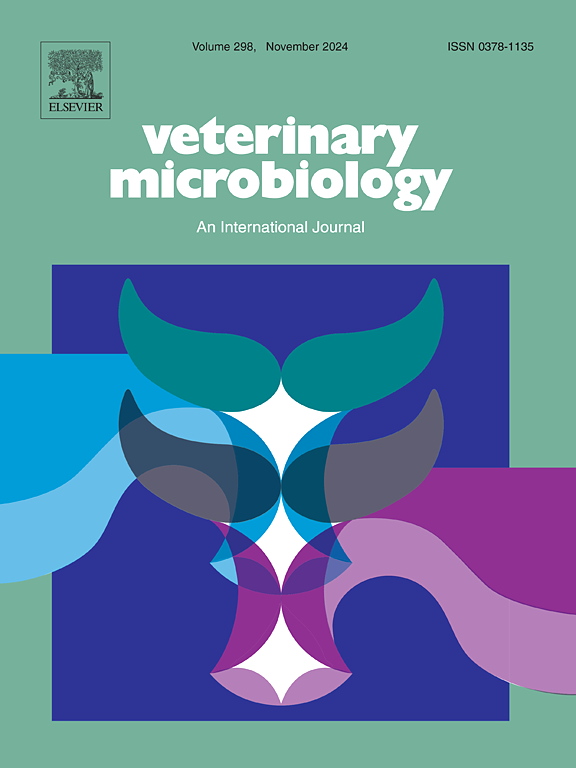Pathological and bacteriological investigations of Pasteurella multocida-induced epididymitis in calves
IF 2.4
2区 农林科学
Q3 MICROBIOLOGY
引用次数: 0
Abstract
Between June 2017 and October 2023, five cases of epididymitis caused by Pasteurella multocida were confirmed in four Japanese Black calves and one Japanese Black-Holstein crossbreed calf across five farms in three prefectures in Japan. Although P. multocida is primarily known to cause respiratory diseases in cattle, its role in reproductive disorders, particularly in epididymitis, has not been extensively studied. Histopathological examination showed pyogranulomatous lesions in the epididymal duct and surrounding areas, consisting of ductal extension, immune cell infiltration, epithelial degeneration, abscess formation, and fibrosis with angiogenesis. In the immunohistochemical analysis, positive reactions to anti-P. multocida serotype A antibodies were observed in macrophages and neutrophils in the epididymal ducts and surrounding areas, suggesting an ascending infection rather than hematogenous spread. This report is the first to directly confirm P. multocida involvement in bovine epididymitis through immunohistochemical examination. P. multocida was isolated in pure culture from the scrotal contents in all cases. The isolates were grouped into sequence types ST79 and ST13, commonly found in the respiratory tract and oral cavity of cattle, using the Rural Industries Research and Development Corporation multilocus sequence typing scheme; pulsed-field gel electrophoresis revealed unique band patterns in the isolates from each case. These results suggest that multiple genetically distinct strains, commonly found in the nasal and oral cavities, incidentally infected the epididymis via an ascending route. This bacterium warrants further investigation as a potential cause of reproductive disorders, particularly in Japanese Black cattle.
求助全文
约1分钟内获得全文
求助全文
来源期刊

Veterinary microbiology
农林科学-兽医学
CiteScore
5.90
自引率
6.10%
发文量
221
审稿时长
52 days
期刊介绍:
Veterinary Microbiology is concerned with microbial (bacterial, fungal, viral) diseases of domesticated vertebrate animals (livestock, companion animals, fur-bearing animals, game, poultry, fish) that supply food, other useful products or companionship. In addition, Microbial diseases of wild animals living in captivity, or as members of the feral fauna will also be considered if the infections are of interest because of their interrelation with humans (zoonoses) and/or domestic animals. Studies of antimicrobial resistance are also included, provided that the results represent a substantial advance in knowledge. Authors are strongly encouraged to read - prior to submission - the Editorials (''Scope or cope'' and ''Scope or cope II'') published previously in the journal. The Editors reserve the right to suggest submission to another journal for those papers which they feel would be more appropriate for consideration by that journal.
Original research papers of high quality and novelty on aspects of control, host response, molecular biology, pathogenesis, prevention, and treatment of microbial diseases of animals are published. Papers dealing primarily with immunology, epidemiology, molecular biology and antiviral or microbial agents will only be considered if they demonstrate a clear impact on a disease. Papers focusing solely on diagnostic techniques (such as another PCR protocol or ELISA) will not be published - focus should be on a microorganism and not on a particular technique. Papers only reporting microbial sequences, transcriptomics data, or proteomics data will not be considered unless the results represent a substantial advance in knowledge.
Drug trial papers will be considered if they have general application or significance. Papers on the identification of microorganisms will also be considered, but detailed taxonomic studies do not fall within the scope of the journal. Case reports will not be published, unless they have general application or contain novel aspects. Papers of geographically limited interest, which repeat what had been established elsewhere will not be considered. The readership of the journal is global.
 求助内容:
求助内容: 应助结果提醒方式:
应助结果提醒方式:


